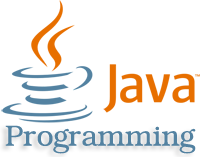
- Java Basic
- Java Object Oriented
- Java Advanced
- Java Data Structure
The data structures provided by the Java utility package are very powerful and perform a wide range of functions. These data structures consist of the following interface and classes:
- Enumeration
- BitSet
- Vector
- Stack
- Dictionary
- Hashtable
- Properties
All these classes are now legacy and Java-2 has introduced a new framework called Collections Framework which we will discussed later:
The Enumeration:
The Enumeration interface isn't itself a data structure, but it is very important within the context of other data structures. The Enumeration interface defines a means to retrieve successive elements from a data structure.
For example, Enumeration defines a method called nextElement that is used to get the next element in a data structure that contains multiple elements.
|
Example:
Following is the example showing usage of Enumeration.

Output:

The Hashtable:
The Hashtable class provides a means of organizing data based on some user-defined key structure. For example, in an address list hash table you could store and sort data based on a key such as ZIP code rather than on a person's name. The specific meaning of keys in regard to hash tables is totally dependent on the usage of the hash table and the data it contains.
Hashtable was part of the original java.util and is a concrete implementation of a Dictionary. However, Java 2 reengineered Hashtable so that it also implements the Map interface. Thus, Hashtable is now integrated into the collections framework. It is similar to HashMap, but is synchronized.
Like HashMap, Hashtable stores key/value pairs in a hash table. When using a Hashtable, you specify an object that is used as a key, and the value that you want linked to that key. The key is then hashed, and the resulting hash code is used as the index at which the value is stored within the table.
The Hashtable defines four constructors. The first version is the default constructor:
Hashtable( )
The second version creates a hash table that has an initial size specified by size:
Hashtable(int size)
The third version creates a hash table that has an initial size specified by size and a fill ratio specified by fillRatio. This ratio must be between 0.0 and 1.0, and it determines how full the hash table can be before it is resized upward.
Hashtable(int size, float fillRatio)
The fourth version creates a hash table that is initialized with the elements in m. The capacity of the hash table is set to twice the number of elements in m. The default load factor of 0.75 is used.
Hashtable(Map m)
Apart from the methods defined by Map interface, Hashtable defines following methods:
|